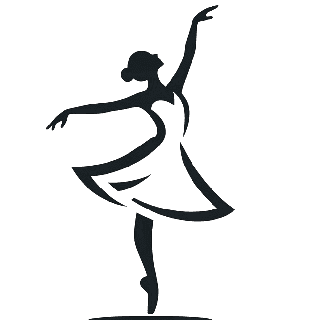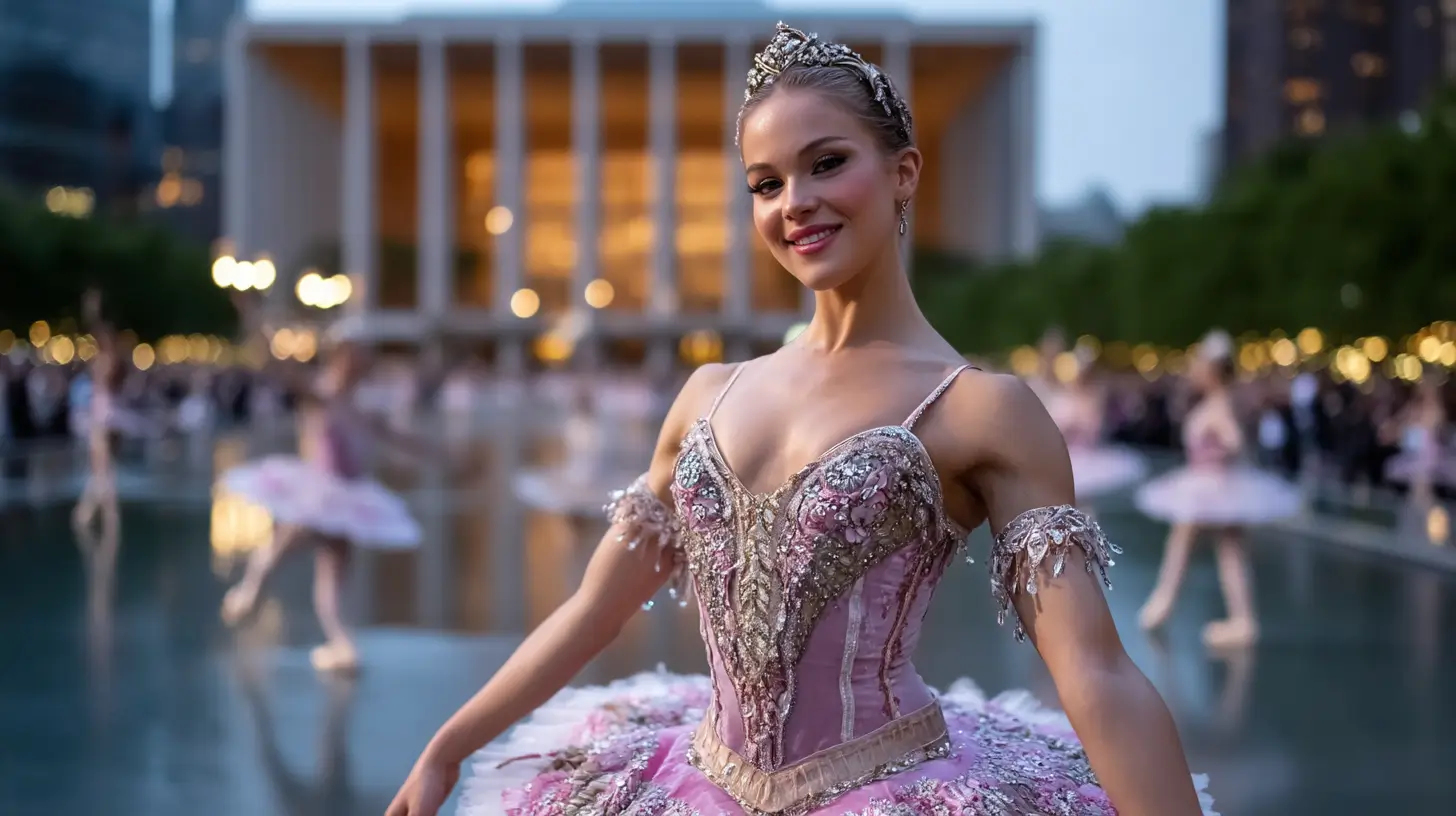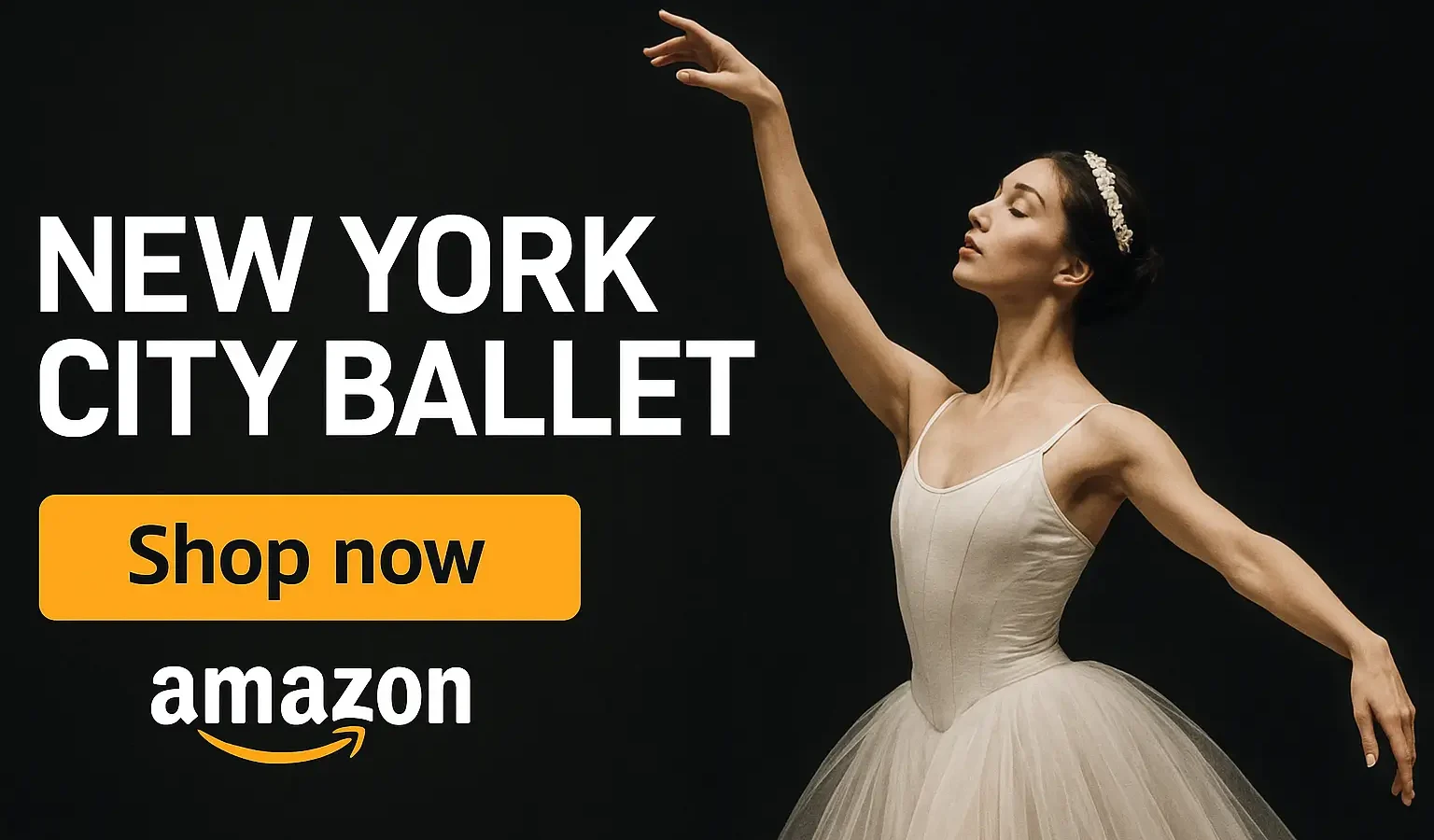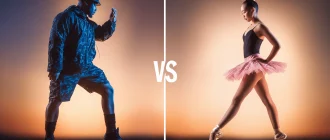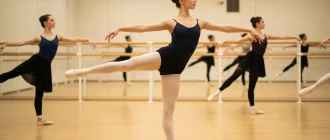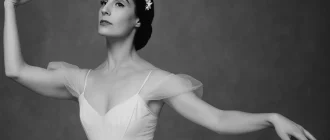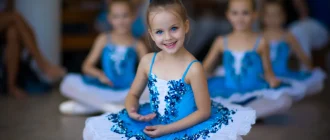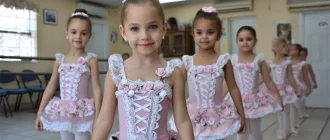Founded in 1948, the New York City Ballet, as a prominent American ballet company, has a significant history and well-documented contributions to the ballet world, with its founding by Lincoln Kirstein and George Balanchine. This New York City Ballet overview highlights its history, key figures, and current status.
Graceful Insights
- The New York City Ballet, founded by Lincoln Kirstein in 1948 and shaped by George Balanchine’s neoclassical style, has redefined ballet by emphasizing pure dance over narrative. Balanchine’s influence on the neoclassical style has been pivotal in shaping the company’s artistic direction.
- Jerome Robbins’ contributions added emotional depth and innovation to NYCB’s repertoire, solidifying its artistic vision through collaborations with Balanchine. Balanchine’s contributions to Broadway also influenced his work with NYCB, integrating elements of musical theater into his choreographic style.
- Today, under the leadership of Jonathan Stafford and Wendy Whelan, New York City Ballet’s structured pathways from training to professional opportunities are evident. The company balances the preservation of its legacy with introducing new works, fostering community engagement, and accessibility.
Art de Podcast
Founding and Early Years
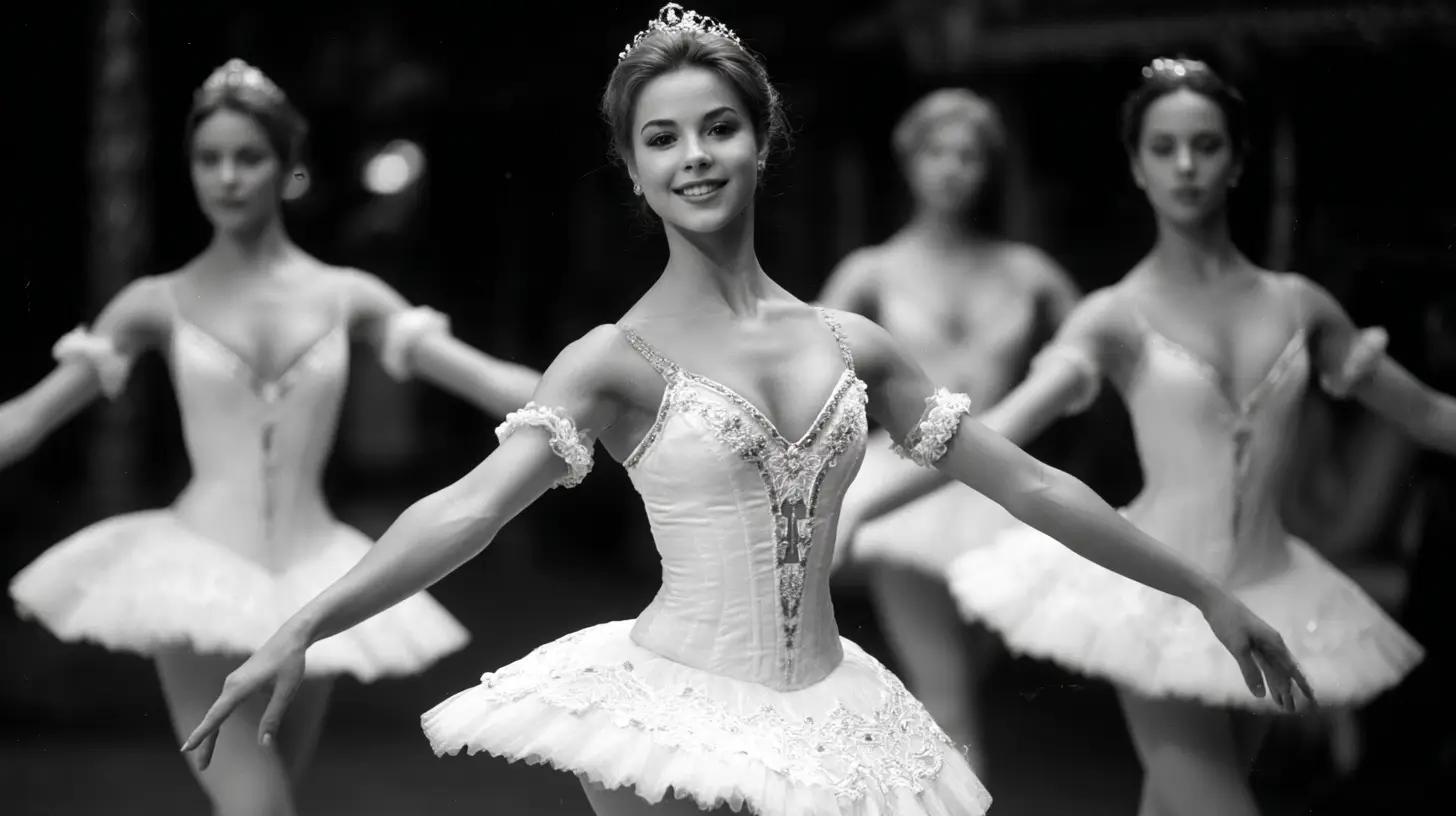
The New York City Ballet was born from the visionary mind of Lincoln Kirstein, who aspired to establish a distinctly American ballet company. This dream began to take shape in 1948 when the Ballet Society transitioned into the New York City Ballet, marking the official foundation of the company. At the heart of this transformation was George Balanchine, a master choreographer whose neoclassical style would become the hallmark of NYCB. The historical significance of the city center played a crucial role in the development of NYCB, serving as a cultural hub for the company’s growth. London also played a significant role in the broader narrative of dance history, with historical tours and collaborations involving notable figures like George Balanchine.
Balanchine’s journey into ballet began at the tender age of ten when he entered the Imperial School of Ballet in russia. His unique choreographic style, which emphasized pure dance over narrative, evolved into what is known as neoclassical ballet. This style significantly influenced the artistic direction of NYCB. It helped create a new chapter in the history of ballet that celebrated the beauty of movement in its purest form. The Metropolitan Opera also played a pivotal role in the early years of American ballet, with key figures like Lincoln Kirstein and George Balanchine shaping its future during their tenure there.
Evolution Under Balanchine
George Balanchine’s tenure at NYCB was nothing short of revolutionary. He created over 150 works for the company, each a testament to his innovative vision. His first American ballet, “Serenade,” set the stage for his future creations, utilizing students from the School of American Ballet to bring his artistic visions to life. Balanchine’s choreography often eschewed traditional storytelling, focusing instead on the beauty and athleticism of the dance itself. After Balanchine died in 1983, Jerome Robbins and Peter Martins oversaw the company’s artistic direction, marking a significant moment in the ballet’s history and management.
Balanchine’s neoclassical approach marked a significant shift from the romantic theatricality that dominated ballet then. This style prioritized geometric lines and musicality, establishing a new aesthetic that would become NYCB’s signature. Works like “Apollo” and “Symphonie Concertante” became cornerstones of the company’s repertoire, demonstrating the versatility and depth of Balanchine’s choreographic genius. He also choreographed a new version of ‘Le Chant du rossignol’ for the Ballet Russe in 1925, which marked the beginning of his influential relationship with the music of Igor Stravinsky.
Under Balanchine’s leadership, NYCB developed a distinct identity that set a standard for American ballet, which continues under artistic director Jonathan Stafford. His influence extended beyond choreography, shaping the very essence of the company and inspiring generations of dancers and choreographers. The legacy of Balanchine’s work continues to resonate, maintaining NYCB’s reputation as one of the foremost dance companies in the world.
Jerome Robbins’ Contributions
Jerome Robbins, another pivotal figure in the history of NYCB, contributed immensely to its artistic repertoire. Having created 54 ballets for the company, Robbins’ works like “Dances at a Gathering”, “The Goldberg Variations”, and the beloved Nutcracker are celebrated for their innovative choreography and emotional depth. His first ballet, “Fancy Free,” marked the beginning of a successful career and established him as a key choreographer in the dance world.
Robbins’ collaboration with George Balanchine as Associate Artistic Director enriched the company’s repertoire and artistic vision. Balanchine’s influence on ballet, particularly through the New York City Ballet, was profound, shaping the company’s repertory and the development of future generations of dancers. His role as a choreographer and ballet master allowed him to infuse NYCB with a unique blend of creativity and discipline. After Balanchine died in 1983, Peter Martins succeeded him as Ballet Master in Chief, overseeing the company’s artistic direction until 2017. Martins’ collaborative efforts with Balanchine and Robbins during the early stages of the ballet’s establishment were critical to its success. Robbins’ contributions have left an indelible mark on the company, further solidifying its status as a leading institution in ballet.
Artistic Leadership Today
Today, the New York City Ballet continues to thrive under the artistic leadership of Jonathan Stafford and Wendy Whelan. Appointed as Artistic Director in February 2019, Stafford has brought a fresh perspective to the company’s structure and contributions while honoring its rich legacy. Jonathan Stafford was named artistic director of the New York City Ballet and the School of American Ballet in February 2019. As Associate Artistic Director, Wendy Whelan adds her extensive experience and deep understanding of the craft to the leadership team.
Under their guidance, NYCB is successfully balancing the preservation of Balanchine’s and Robbins’ masterpieces with introducing innovative new works. This blend of tradition and innovation ensures that the company remains relevant and continues to captivate audiences with its athletic and contemporary style, making it a beacon of creativity in the ballet world.
Company Structure
The New York City Ballet’s structured pathways from training to professional opportunities are a testament to its unique and well-defined company structure. At the helm is Artistic Director Jonathan Stafford, who was named artistic director in February 2019, ensuring the company remains true to its rich legacy while embracing contemporary innovations.
The company is organized into several tiers, including principal dancers, soloists, and the corps de ballet. This hierarchical structure allows for a dynamic range of performances, showcasing the diverse talents of its dancers. The principal dancers, often the most experienced and skilled, take on leading roles while soloists and corps de ballet members provide essential support and depth to each performance.
Headquartered at the Lincoln Center, the New York City Ballet also has facilities at the David Rose Building, performing primarily at the David H. Koch Theater. This iconic venue, designed specifically for ballet, offers an ideal setting for the company’s athletic and contemporary style. During the summer, the company takes residence at the Saratoga Performing Arts Center, providing a picturesque backdrop for its performances and further extending its reach.
The New York City Ballet is deeply committed to making ballet accessible to a wide audience. This commitment is reflected in its extensive education programs and public initiatives, which aim to foster a love for ballet in the community. The School of American Ballet, the official school of NYCB, plays a crucial role in this mission by training young dancers worldwide.
With a strong foundation by George Balanchine and Lincoln Kirstein and a continued dedication to preserving the legacy of Balanchine and Jerome Robbins, the New York City Ballet remains a leading force in ballet. The company’s structure supports its creativity, athleticism, and artistic excellence goals, ensuring its continued success and innovation.
Performance Venues
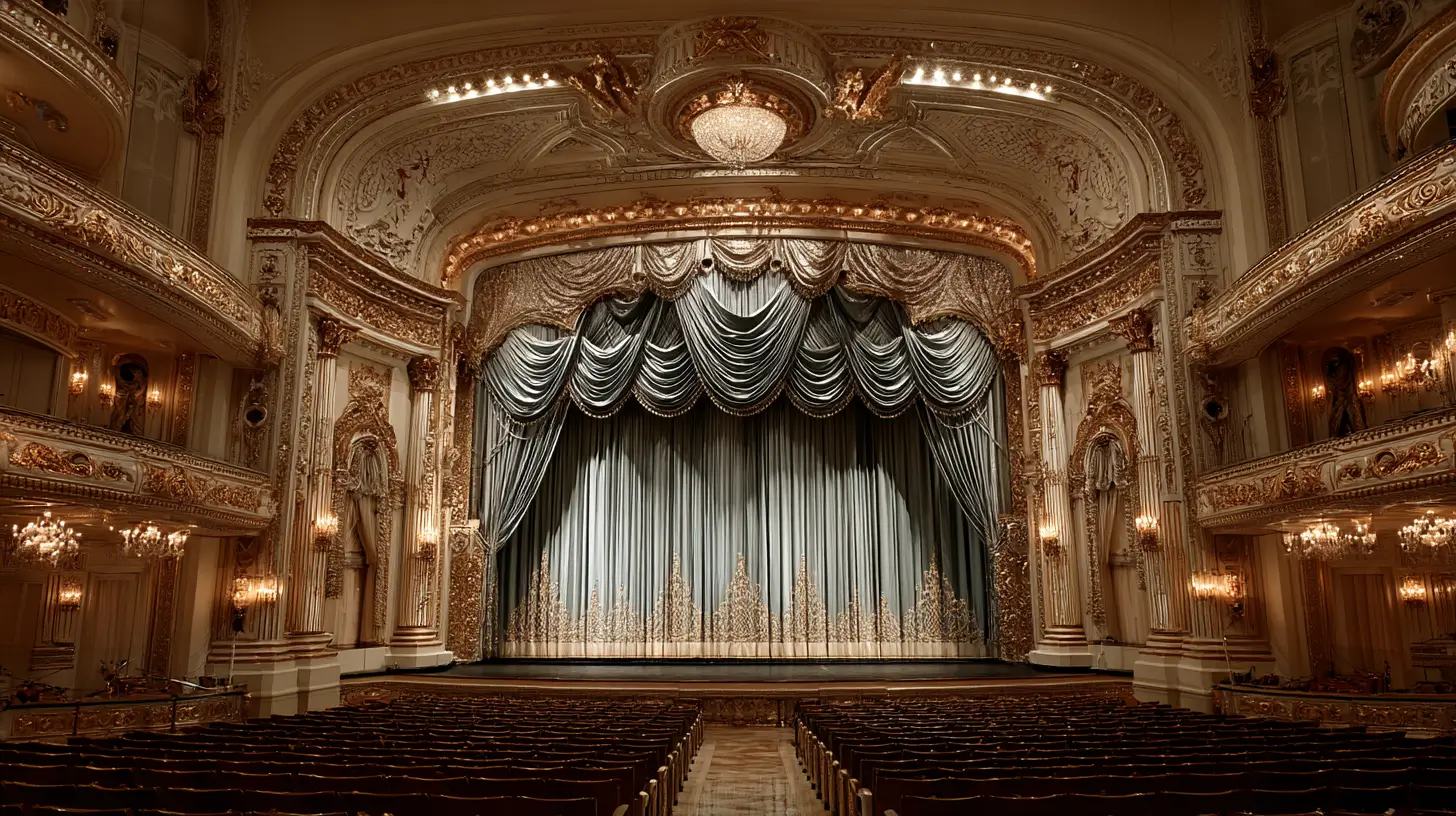
The New York City Ballet performs primarily at the David H. Koch Theater at the Lincoln Center for the Performing Arts in New York City. Opened in 1964, the Koch Theater was specifically designed for ballet, providing an ideal setting with its superb acoustics and architecture. This venue has become synonymous with NYCB, hosting countless memorable performances. Originally known as the New York State Theater, it has served as the home for the ballet company since its opening, underscoring its significance as a venue for performances and as part of the ballet’s legacy in New York City.
During the summer, the Saratoga Performing Arts Center (SPAC) is the company’s home away from home. Nestled in a picturesque natural setting, SPAC offers a unique and enchanting environment for dancers and audiences. Together, these venues play a crucial role in enhancing the ballet experience, making each performance an unforgettable evening at the theatre where dancers perform.
Educational Programs
The School of American Ballet (SAB), founded by Lincoln Kirstein and George Balanchine on January 2, 1934, has been instrumental in shaping the future of ballet. As the official school of NYCB, SAB offers specialized workshops and training programs that cater to various age groups and skill levels. This rigorous training ensures that students are well-prepared for professional careers in ballet.
The David Rose Building, located at Lincoln Center for the Performing Arts, is the home of the School of American Ballet, where aspiring dancers are trained.
In addition to formal training, NYCB has implemented mentorship programs under Jonathan Stafford’s leadership. These programs pair current dancers with apprentices, facilitating a smooth transition into the company. NYCB fosters a broader appreciation for ballet through its education programs, nurturing the next generation of dancers and audiences.
The School of American Ballet
The School of American Ballet (SAB) is one of the most prestigious ballet schools globally and serves as the official school of the New York City Ballet. Founded in 1934 by George Balanchine and Lincoln Kirstein, SAB was established to create a uniquely American ballet style.
Located at Lincoln Center, the school offers comprehensive programs catering to students of all ages and skill levels. The faculty at SAB includes many former dancers from the New York City Ballet, who bring their expertise and experience to training new generations of dancers. This expert guidance ensures that students receive top-tier instruction in technique and performance.
SAB strongly emphasizes developing the athletic and contemporary style that characterizes the New York City Ballet. Students are trained rigorously in technique, musicality, and the neoclassical style pioneered by Balanchine. Performance opportunities abound, with annual showcases at Lincoln Center and other venues around New York City, providing students with invaluable stage experience.
The school has a storied history of producing exceptional dancers who go on to perform with the New York City Ballet and other leading companies worldwide. Notable alums include Francisco Moncion and numerous principal dancers, inspiring many children who aspire to enter the world of ballet.
Committed to making ballet accessible, SAB offers various programs and scholarships to students from diverse backgrounds. This inclusivity ensures that talent and passion for ballet are nurtured, regardless of financial circumstances.
As part of the New York City Ballet’s mission, the School of American Ballet is critical in developing the next generation of ballet dancers and choreographers, ensuring the art form’s vibrant future.
New York Choreographic Institute
The New York Choreographic Institute, an initiative of NYCB, focuses on nurturing the talent of new and creatively choreographed works. This institute provides choreographers with essential resources, including the opportunity to work directly with dancers, allowing for a hands-on approach to developing new works. The importance of drama in developing new choreographic works cannot be overstated, as it adds depth and emotional resonance to the performances.
The institute allows choreographers to push their creative choreographed artistic boundaries and express their unique visions. Typically, selected choreographers have at least five years of experience, showcasing their potential and commitment to the art form.
Through this initiative, New York City Ballet continues to innovate and expand the horizons of ballet.
City Ballet Repertoire
The New York City Ballet’s repertoire is one of the most extensive and diverse in the world, featuring over 400 works by renowned choreographers such as George Balanchine and Jerome Robbins. As the resident ballet company of Lincoln Center, NYCB performs a wide range of ballets, from classic works like “The Nutcracker” to more contemporary pieces that push the boundaries of the art form.
Under the artistic direction of Jonathan Stafford, the company continues to innovate while honoring its rich legacy. Iconic ballets such as Balanchine’s “Serenade” and Robbins’s “Dances at a Gathering” showcase the athletic and contemporary style that has become synonymous with the New York City Ballet. These works highlight the technical skill and artistic expression of the company’s dancers, making each performance a testament to the company’s dedication to excellence.
The New York City Ballet’s repertoire is characterized by its emphasis on American ballet, reflecting the company’s commitment to making ballet accessible to a wide audience. Performances at the David H. Koch Theater and the Saratoga Performing Arts Center feature a range of ballets, from full-length classics to shorter, more experimental works. This diversity ensures something for everyone, from seasoned ballet enthusiasts to newcomers.
George Balanchine, the company’s ballet master, played a significant role in shaping the New York City Ballet’s repertoire. His works remain the cornerstone of the company’s performances, inspiring and captivating audiences. The repertoire also includes contributions from notable choreographers such as Peter Martins and Francisco Moncion, adding to the company’s rich and diverse heritage.
The New York City Ballet’s commitment to education and public programs ensures its repertoire is accessible to many audiences. These initiatives aim to inspire a new generation of dancers and choreographers, fostering a broader appreciation for ballet. The company’s performances are accompanied by the New York City Ballet Orchestra, providing live music that enhances the emotional depth of each ballet.
Collaborations with other artists and companies, such as the Stravinsky Festival, further enrich the New York City Ballet’s repertoire. These partnerships showcase the company’s dedication to artistic collaboration and innovation, ensuring its performances remain fresh and exciting.
Following Balanchine’s death, the New York City Ballet continued to evolve, incorporating new works and collaborations into its repertoire. Today, the company is recognized as one of the world’s leading ballet companies, with a repertoire that reflects its commitment to artistic excellence and innovation. The contributions of principal dancers and alumni have been instrumental in shaping the legacy and future of NYCB, ensuring its continued success and innovation.
The New York City Ballet continues to inspire and delight audiences worldwide with its rich and diverse repertoire. The company’s performances at venues such as the York State Theater and the City Center feature a range of ballets, from classic works to more contemporary pieces. This blend of tradition and innovation ensures that the New York City Ballet remains at the forefront of the ballet world, captivating audiences with its athletic and contemporary style.
Key Productions and Festivals
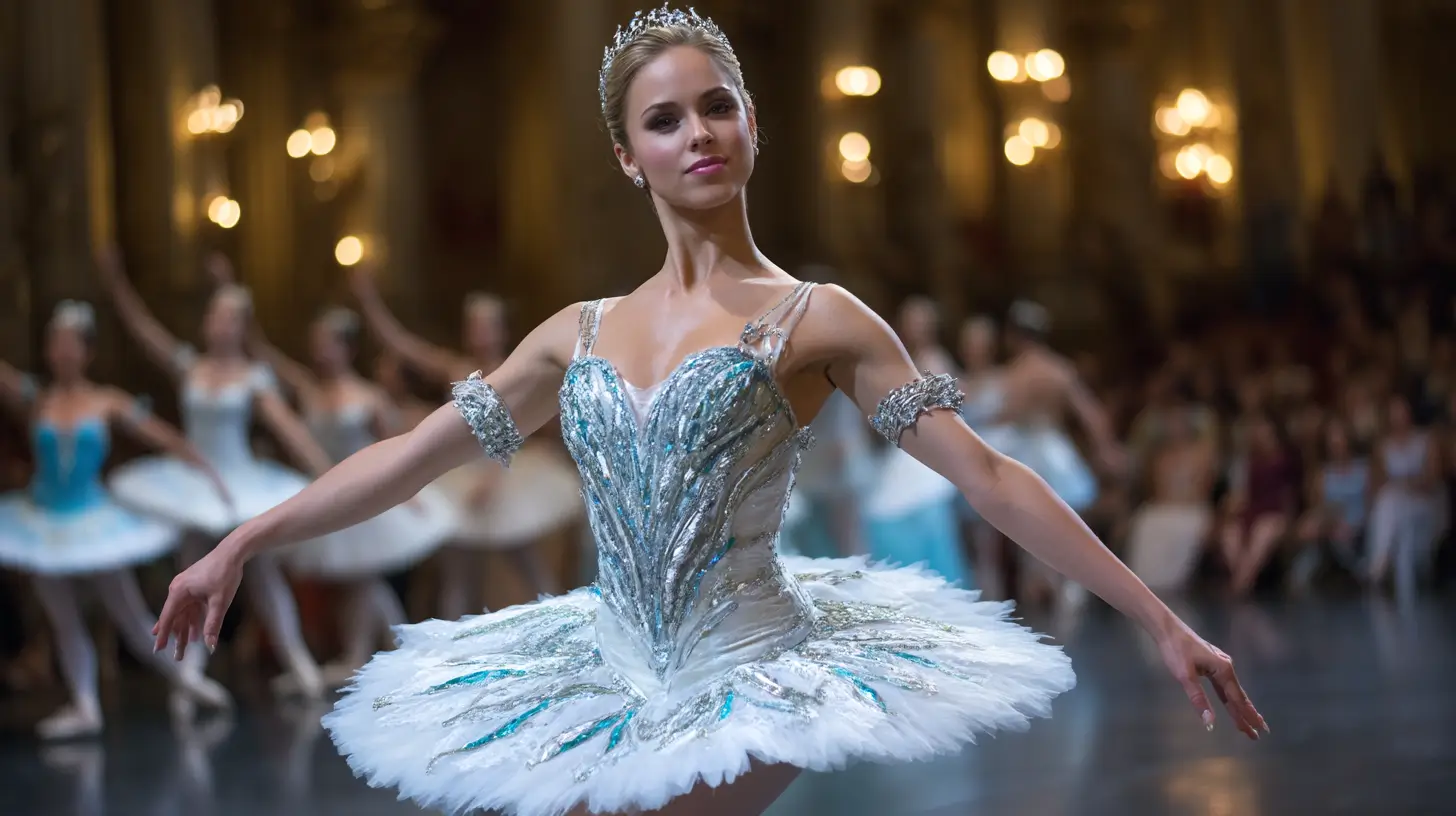
NYCB’s key productions and festivals are a testament to its artistic excellence and versatility. The Stravinsky Festival, for instance, showcases various ballets set to the music of Igor Stravinsky, highlighting the company’s deep connection to this influential composer. These festivals celebrate music and dance and reinforce NYCB’s commitment to artistic collaboration and innovation.
One of the most significant works in NYCB is George Balanchine’s The Nutcracker, a cornerstone of American ballet and a beloved holiday tradition.
The Saratoga Performing Arts Center also hosts various music and dance festivals, underscoring its importance as a versatile arts venue in the media. These events, along with NYCB’s spring repertory seasons, continue to draw audiences and critics alike, solidifying the company’s reputation as one of the foremost dance companies in the world.
The New York City Ballet Orchestra
The New York City Ballet Orchestra plays a crucial role in the company’s performances, providing live music that enhances the emotional depth of each ballet. The orchestra’s collaboration with the dancers ensures a cohesive performance, synchronizing movements with the musical score. This partnership is essential for maintaining the rhythm and pacing of the ballets, creating a more immersive experience for the audience.
The importance of the piano in the musical training of prominent figures in ballet cannot be overstated. For instance, Balanchivadze supported himself by playing piano in a cinema and also studied piano and composition at the conservatory, highlighting the deep connection between music and ballet.
The orchestra comprises a diverse group of musicians, each bringing their expertise. This diversity allows for varied interpretations of choreographic works, contributing to the distinct atmosphere of each performance. Through their exceptional performances, the New York City Ballet Orchestra enriches the overall experience of NYCB’s productions.
Community Engagement and Accessibility
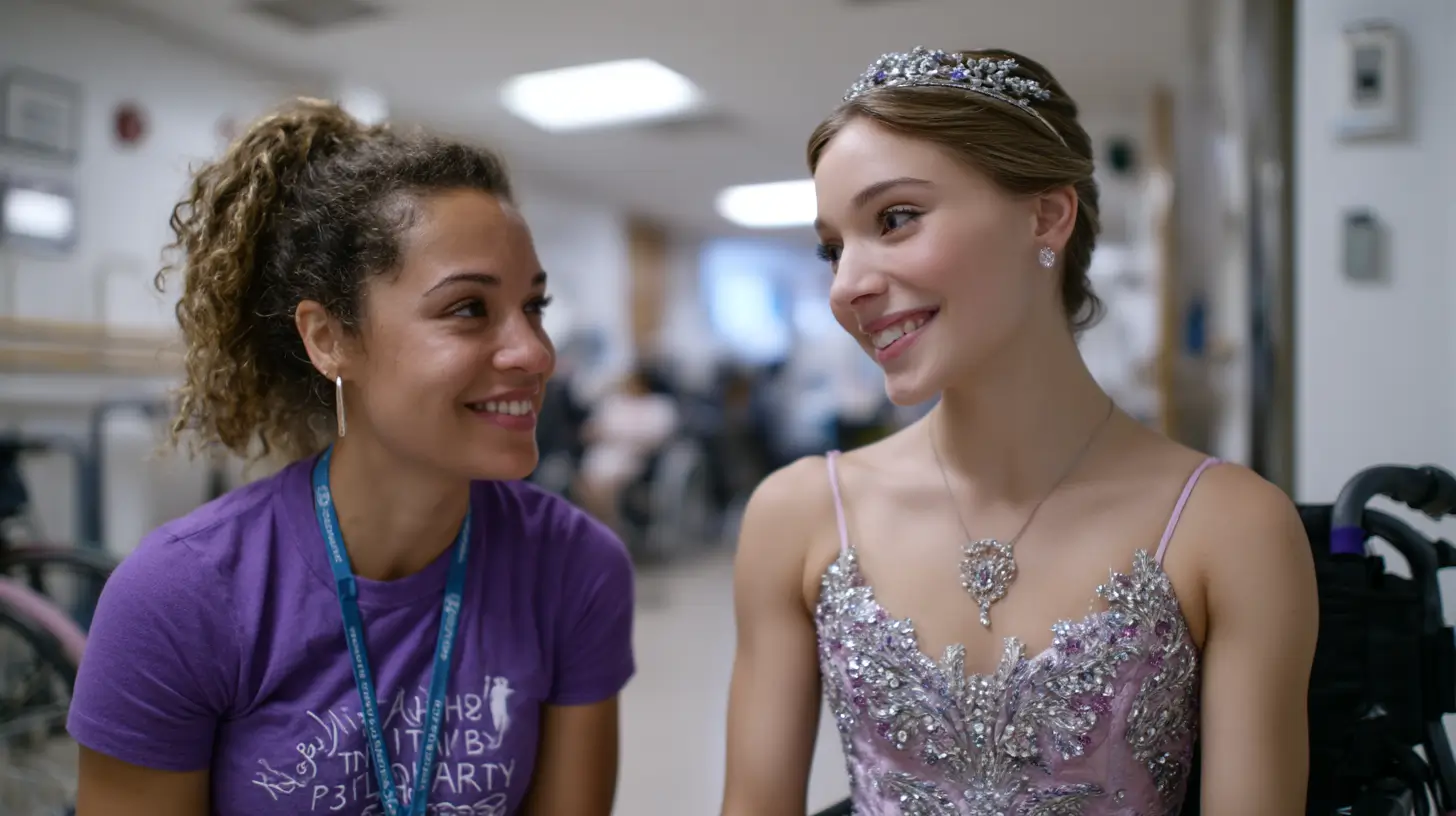
New York City Ballet is committed to making ballet accessible to everyone, offering various community engagement programs and initiatives promoted at the box office. For example, the ‘Kids in Free’ program allows children aged 16 and under to attend performances for free when accompanied by an adult. This initiative aims to introduce young audiences to ballet, invitingly and affordably.
NYCB’s international engagements include performances in major cities worldwide, such as Canada, showcasing the company’s global reach and influence.
Additionally, programs such as ‘Family Four Pack’ and ‘40 under 40’ provide affordable ticket options, ensuring that ballet is accessible to a wider audience. NYCB also offers autism-friendly performances, creating a comfortable environment for individuals with autism and their families.
These efforts reflect NYCB’s dedication to fostering a love for ballet within the community and making the art form more inclusive.
Awards and Recognition
The New York City Ballet has garnered numerous awards and accolades, reflecting its exceptional contributions to the ballet world. Renowned for its innovative and athletic style, the company has been praised by critics and audiences alike.
Among the many honors, the New York City Ballet has received recognition from prestigious organizations such as the New York Times and Dance Magazine. The company’s dancers and choreographers have also been celebrated, with many receiving the esteemed Bessie Awards and the National Medal of Arts.
The New York City Ballet is consistently named one of the foremost dance companies in the world, a testament to its influence and excellence in American ballet. Artistic Director Jonathan Stafford has been lauded for his visionary leadership, earning numerous awards and honors for his contributions to the art form, including recognition from the New York Times.
The company’s education programs, including the School of American Ballet, have also received high praise for their excellence and innovation. Public programs like the spring repertory seasons and the Stravinsky Festival are celebrated for their artistic quality and popularity, drawing audiences from around the globe.
The New York City Ballet’s commitment to making ballet accessible has been recognized through various grants and awards from organizations such as the National Endowment for the Arts. These accolades underscore the company’s dedication to inclusivity and broadening the reach of ballet.
The numerous awards and recognitions New York City Ballet has received highlight its unwavering commitment to excellence and innovation. As a leading force in ballet, the company continues to inspire and captivate audiences, ensuring its legacy endures for generations to come.
Principal Dancers and Alumni
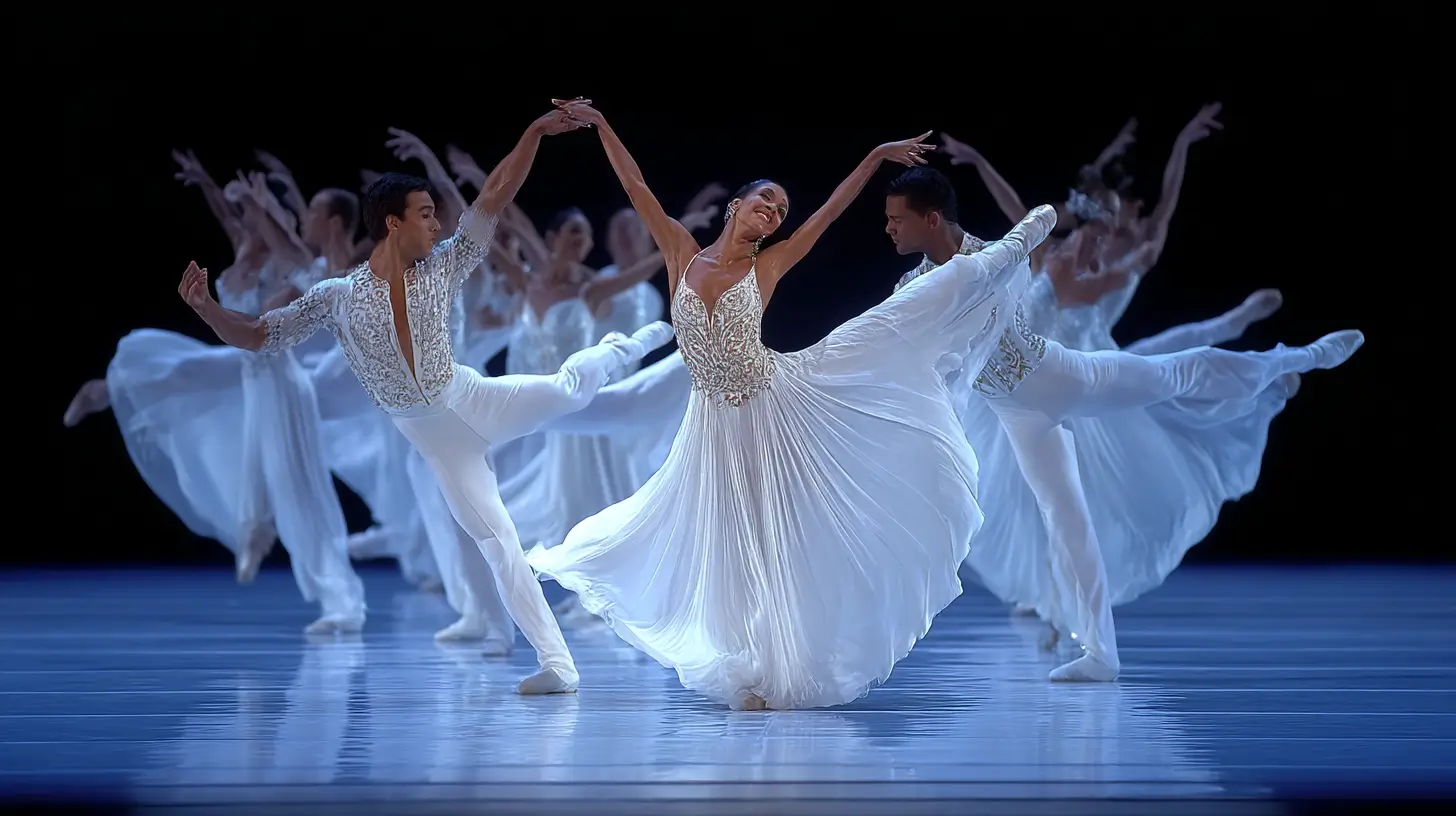
The New York City Ballet has been home to some of the most talented dancers in the world, many of whom began their training at the School of American Ballet. The initial dancers of NYCB were largely graduates of SAB, bringing a high level of skill and artistry to the company from the beginning. This tradition of excellence continues today, with principal dancers trained under the rigorous standards of SAB. George Balanchine, one of the key figures in the company’s history, received his early training at the Imperial School of Ballet in St. Petersburg, Russia.
Jonathan Stafford, who now serves as artistic director, previously performed as a principal dancer with NYCB. His extensive experience with works by world-renowned choreographers like Balanchine and Robbins has equipped him with a deep understanding of the company’s artistic heritage.
The contributions of principal dancers and alumni have been instrumental in shaping the legacy and future of NYCB, ensuring its continued success and innovation.
Quick-Glance Overview
| Key Aspect | Details |
|---|---|
| Founded | 1948 by choreographer George Balanchine and arts patron Lincoln Kirstein |
| Home Venue | David H. Koch Theater, Lincoln Center, Manhattan, New York City |
| Current Artistic Leadership | Artistic Director Jonathan Stafford (appointed 2019) and Associate Artistic Director Wendy Whelan |
| Company Size (2024-25 season) | ≈ 90 dancers, the largest professional dance ensemble in the U.S., the New York City Ballet |
| Artistic Identity / Style | Primarily neoclassical—speed, musicality, and clarity derived from Balanchine’s technique |
| Active Repertory | 400 + ballets; ~60 works performed each season, spanning Balanchine, Robbins & contemporary choreographers |
| Affiliated School | School of American Ballet (official academy, est. 1934) |
| Orchestra | New York City Ballet Orchestra; Music Director Andrew Litton, Wikipedia |
| Season Pattern | Fall, Winter & Spring repertory seasons in NYC plus a six-week Nutcracker run (Nov–Dec), New York City Ballet |
| Recent Touring Highlight | 75th-anniversary tour to London’s Sadler’s Wells, March 2024, The Guardian |
| Annual Operating Budget | FY 2023 expenses ≈ $94 million (IRS Form 990), ProPublica |
| Official Website | nycballet.com |
Resume
The New York City Ballet’s rich history, from its founding by Lincoln Kirstein and George Balanchine to its current leadership under Jonathan Stafford and Wendy Whelan, is a testament to its enduring legacy and innovation. As the resident ballet company at the New York State Theater, NYCB has played a pivotal role in American ballet, showcasing its repertoire and the prominent choreographers linked to the company. The contributions of key figures like Jerome Robbins and the dedication of principal dancers and alumni have solidified its status as one of the world’s foremost dance companies.
Through its educational programs, community engagement initiatives, and the nurturing of new choreographic talent, NYCB continues to inspire and captivate audiences. As the company moves forward, it remains committed to preserving its artistic heritage while embracing new creative possibilities, ensuring that the magic of ballet continues to thrive for generations to come.
Frequently Asked Questions
When was the New York City Ballet founded?
The New York City Ballet was founded in 1948 when the Ballet Society was transformed into NYCB.
Who were the key figures in the founding of NYCB?
Lincoln Kirstein and George Balanchine were the pivotal figures in founding the New York City Ballet (NYCB). Their collaboration sparked the creation and early development of this influential institution.
What is the neoclassical style in ballet?
The neoclassical style in ballet, developed by George Balanchine, prioritizes the aesthetics of movement and geometric form while emphasizing musicality rather than narrative.
What role does the New York City Ballet Orchestra play in performances?
The New York City Ballet Orchestra plays a crucial role in performances by providing live music that enhances the emotional depth and drama, ensuring synchronization between the music and the dance. Their presence is integral to the overall experience of the audience.
How does NYCB make ballet accessible to the community?
NYCB enhances community access to ballet through outreach initiatives such as the ‘Kids in Free’ program and autism-friendly performances, ensuring diverse audiences can enjoy the art form. This approach fosters inclusivity and broadens ballet’s reach within the community.
Where does the New York City Ballet perform, and how big is the venue?
NYCB’s home is the 2,544-seat David H. Koch Theater on the south side of Lincoln Center’s main plaza.
What accessibility services are offered at performances?
The theater provides wheelchair-accessible seating on multiple levels, elevators to every ring, accessible restrooms, and complimentary assistive-listening devices or neck loops for amplified shows.
Does NYCB have discounted rush tickets for young people?
Yes—anyone aged 13-30 can register online for the “$30 for 30” rush program, which releases week-of seats for just $30.
Is there a dress code for audience members?
There’s no formal dress code; most patrons choose business-casual attire, but everything from jeans to evening wear is welcome outside of gala nights.
Are sensory-friendly performances available?
NYCB schedules relaxed 75-minute shows with adjusted lighting, lower sound levels, flexible entry and exit, and quiet spaces so patrons with autism or sensory processing challenges can enjoy the repertory comfortably.
What educational programs can families attend?
Public options include one-hour “Family Saturdays,” ballet-making Children’s Workshops, and on-stage “Inside NYCB” presentations that unpack choreography, music, and production elements for all ages.
Can visitors go behind the scenes?
Student Tours—both School Day and Working Day formats—take groups into the theater for rehearsal observation, costume close-ups, and movement activities led by teaching artists.
Does the company tour outside New York?
Yes, full-company tours and the chamber-sized NYCB MOVES appear nationwide and internationally, with upcoming stops in Washington, D.C., and Saratoga Springs, NY.
How are dancers supported in health and wellness?
NYCB pioneered in-house physical therapy in 1980 and maintains dedicated PT staff, cross-training classes, and a Health & Wellness Coordinator to manage injury prevention and recovery.
Is there live music at every show?
Performances feature NYCB’s 66-member orchestra, led by Music Director Andrew Litton; the ensemble plays a demanding weekly repertoire and travels on most North American tours.
How does NYCB blend ballet and high fashion?
The annual Fall Fashion Gala commissions couture designers—2025’s edition pairs Iris van Herpen with a Jamar Roberts world premiere, making the night’s parts runway and repertory equal.
What ways are there to support the company financially?
Patrons can donate, join membership tiers for exclusive events, or enter the Patron Program, which funds repertory, education, and outreach while granting perks like backstage tours.
Which outreach projects bring ballet into schools?
Residencies like The Nutcracker Project, Ballet Tales, and Project Ballet embed teaching artists in NYC classrooms, combining active art-making with curriculum resources.
Are internships or non-performing careers available?
NYCB posts year-round openings—from development internships to production and administrative roles—and offers “lunch-and-learn” sessions for interns to explore departments company-wide.
What health and safety rules should ticket-holders know?
Masks and proof of vaccination are optional; enhanced ventilation, rigorous cleaning, and same-season ticket exchanges for illness remain in line with public-health guidance.
Where can I buy official NYCB merchandise?
The online Gift Shop stocks apparel, souvenirs, and Nutcracker-themed items year-round and ships worldwide.
Does NYCB accept group bookings?
Yes—discounted group rates are available for repertory and Nutcracker performances, with dedicated request forms for tour operators, schools, and social organizations.
How can fans engage with NYCB from home?
City Ballet The Podcast offers weekly deep dives into repertory, history, and wellness, supplemented by video content and summer-session films released on NYCB’s digital channels.
